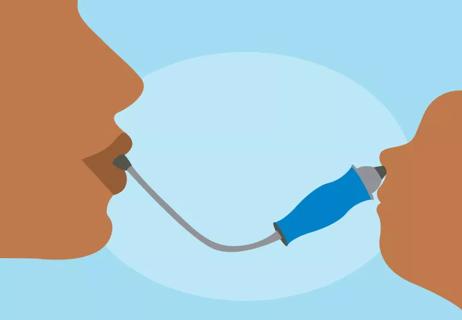Using a saline solution, they help relieve sinus pressure and remove excessive mucus

Yes, using a neti pot might appear a little ridiculous, but these teapot-looking contraptions actually do wonders for nasal congestion. Some people swear by them, especially as they get relief so quickly without using medication.
Advertisement
Cleveland Clinic is a non-profit academic medical center. Advertising on our site helps support our mission. We do not endorse non-Cleveland Clinic products or services. Policy
But there’s more to these seemingly simple devices. It’s important to know how to use a neti pot correctly and safely to prevent any bigger issues than you started with.
Here’s how you can start reaping the benefits of safe neti pot use. Ear, nose and throat specialist Raj Sindwani, MD, gives us some tips.
A neti pot is a device that pushes a flow of a saline solution through your nasal passages, clearing out built-up mucus and allergens trapped inside your nasal passage. Why saline instead of just water? It helps prevent irritation of your nasal passage.
As the use of neti pots grew over the years, so did the different nasal care tools that offered similar treatment in slightly different forms. Here are some types of neti pots:
Advertisement
Your neti pot will push a flow of saline solution through your nasal passages, clearing out mucus and allergens inside your nasal passage. Saline helps prevent irritation of your nasal passage.
You may want to use a neti pot for sinus infections, nasal congestion, allergies and colds.
There are several advantages to choosing a neti pot as your means of sinus treatment. Neti pot benefits include:
You may be wondering, Are neti pots safe? And, Do neti pots work? Yes, if you use them correctly. But it’s always best to consult with your healthcare provider about the best course of action and if a neti pot is a good choice for you.
Need some neti pot instructions? For your standard teapot-shaped neti pot, the tool works pretty simply. Here’s what do to:
While there are several benefits to using a neti pot, there are important tips to keep in mind to get the best possible results and to avoid creating any unnecessary issues from regular use:
Advertisement
The solution packets that come with your neti pot, or ones that are sold separately, are great because they offer the perfect amount of salt. Too little or too much salt may cause irritation in your nasal passage.
But if you want to make your own neti pot solution at home, the American Academy of Allergy, Asthma & Immunology recommends the following recipe:
Mix the salt and baking soda together and store in an air-tight container. To make enough solution for one use, add 1 teaspoon of mixture to 1 cup of lukewarm water.
For the most part, neti pots are safe to use as long as you properly follow directions, especially with the saline solution, and keep your neti pot properly cleaned.
And, as mentioned earlier, if you don’t clean your device thoroughly, you do risk putting bacteria right back in your nasal passage for additional infection.
So, how often can you use a neti pot?
“Be careful about overusing your neti pot, too, because that can lead to irritation of the nasal passage,” cautions Dr. Sindwani. “If your issues continue after a few days, contact your healthcare provider.”
Advertisement
Learn more about our editorial process.
Advertisement

Keeping your baby’s airways clear of mucus helps with breathing and feeding

Here's when to worry about your nasal mucus changing hues

Most recommended precautions center around minimizing bruising or swelling

Even one drink can have an impact on your cognitive function leading to slurred speech, blurred vision and impaired memory

Understand who may (and may not) benefit

Lorem ipsum dolor sit amet. Et odio Quis vel ipsam omnis eum alias deleniti et placeat impedit non voluptas galisum hic autem enim et cupiditate aliquid. Est beatae quidem non facilis autem ut commodi nisi aut tempore rerum et dolores voluptatem cum enim optio id sapiente quasi. Ad laboriosam officiis 33 cupiditate sequi ea voluptatum consectetur qui necessitatibus voluptate et quasi doloremque et facere explicabo quo explicabo officia

Type 2 diabetes isn’t inevitable with these dietary changes

Applying a hot or cold compress can help with pain